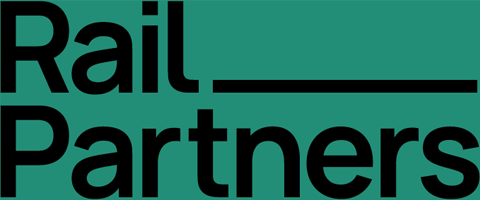
Trebling rail freight can help rebalance and decarbonise a growing UK economy
- Call for evidence response sets out the need for an ambitious freight growth target to transform the sector over the next three decades
- By trebling freight across Britain, rail could further support the transition to a decarbonised economy, rebalance the UK economy, and help businesses scale up both domestically and internationally
- The target would also increase the sector’s contribution to UK plc to around £7.5bn per year.
In its response to the Great British Railways Transition Team’s freight growth target call for evidence, Rail Partners - the trade body representing independent passenger and freight operating companies – sets out the necessary policy needed to make the ambitious target achievable; and explains why trebling rail freight within the coming decades will support the transition to net-zero.
Transport is the largest carbon-emitting sector in the UK economy. Essential action is needed to lower transport emissions now so the UK can meet its commitment to reach net-zero carbon emissions by 2050.
Based on rail freight’s economic contribution today, a trebling of rail freight would increase the sector’s contribution to UK plc to around £7.5bn per year. It will also help to rebalance the economy as 90% of these economic benefits occur outside of London and the South-East.
Rail Partners Chief Executive, Andy Bagnall, said:
‘The demand for rail freight is already here today as customers increasingly look towards rail as a sustainable, cost effective, and reliable way to get their goods to market.
‘Setting an ambitious growth target is key, supported by a wider policy framework to shift freight off the roads and onto the rails.
‘Rail freight plays a critical role in the journey to net-zero. It removes seven million heavy goods vehicles from the roads each year, saving 1.4 million tonnes of carbon.’
The target, overseen by the proposed Great British Railways (GBR), will provide freight operators, customers and third parties with the confidence to make significant investments and infrastructure to ensure freight growth is realised. The stretching target to treble rail freight by 2050 should be underpinned by shorter term targets which are aligned with GBR’s five-year funding cycles.
-ends-
Notes to editors
Media contact
Chanel Townsend
Email: Chanel.Townsend@railpartners.co.uk
M: 07458 051 995
About Rail Partners
Rail Partners exists to make the railway better by harnessing the expertise and creativity of private sector operators for the benefit of those who use the railway, passengers and freight customers, and those who pay for it, including taxpayers.
Rail Partners provides advocacy and policy solutions for its private sector passenger owning group and freight company members. It also provides technical services to train operating companies in both the public and private sectors.
A full list of its members can be found here: https://www.railpartners.co.uk/the-partners
For more information regarding membership visit: https://www.railpartners.co.uk/
Key points of the submission
Rail Partners has called for a target to treble freight by 2050. We believe the target should:
- Be underpinned by five year interim targets aligned with GBR’s funding cycle, to ensure focus on delivering freight growth in the short-term
- Apply across the GB network, reflecting the GB-wide nature of rail freight Though GBR’s regional divisions may set specific targets at regional and route level to ensure local focus on delivering for freight.
- Apply across all commodities. To ensure that all opportunities for freight growth receive equal focus and to give flexibility for industry and GBR to respond to changing customer demands and economic
- Be supported by policies, infrastructure, and incentives (such as an expansion of the Mode Shift Revenue Support scheme and reintroduction of the Freight Facilities Grant in England) that will enable freight
To support freight growth Rail Partners has identified a series of infrastructure and infill electrification schemes which could unlock a significant increase in rail freight and support the transition towards a carbon net zero freight sector.
Infrastructure to support a trebling of rail freight volumes
- HS2 (including Golborne link alternative) to release capacity on the conventional network
- Transpennine Route Upgrade
- Felixstowe to Nuneaton railway upgrade
- Syston-Trent gauge enhancements
- Eaglescliffe-Northallerton gauge enhancements
- W10a-W12 gauge enhancements between Didcot and Cardiff on GWML
- W12 gauge clearance on classic network from Channel Tunnel to Wembley Yard
- Angerstein Wharf chord
Infill electrification priorities for freight
- Thameshaven Branch Line linking to London Gateway
- Link line between the Great Western Mainline at Acton and the West Coast Mainline and the North London Line
- Felixstowe-Ipswich Branch Link
- Connections to key container terminals
- Link lines between the East Coast Mainline to terminals in Leeds and Wakefield
- Corby to Syston and Erewash Valley
- Teesport to Northallerton
- Nuneaton to Birmingham Grand Junction (via Hams Hall and Landor Street Junction)
- Basingstoke to Southcote Junction and Oxford to Denbigh Hall Junction
- Power supply upgrades on key mainline routes such as East Coast Main Line and West Coast Main Line
